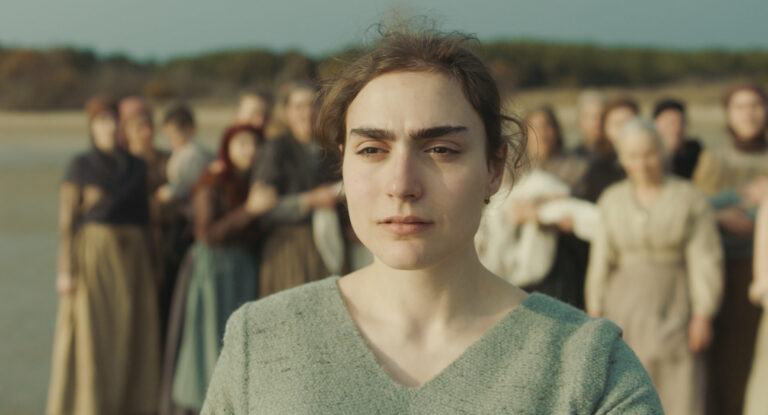An der friulanischen Küste bringt Agata ein totgeborenes Mädchen zur Welt. Der Pfarrer verweigert die Taufe. Agata macht sich auf in die Berge, hin zu einem mysteriösen Ort an dem tote Kinder für die Länge eines Atemzuges zurück ins Leben geholt und somit auch getauft werden können. Laura Samani gelang mit ihrem Debütfilm, der in Cannes 2021 seine Weltpremiere feierte, eine dunkle, poetische Erzählung über weibliche Selbstbestimmung und eine abenteuerliche Suche nach Hoffnung.
Director’s statement:
In 2016, I discovered that in Trava, in my Friuli Vene- zia-Giulia, existed a sanctuary where up until the 19th century, particular miracles were said to occur: that still- born children could be brought back to life for the space of one breath. A miracle such as this was necessary in order to baptize these babies, who were otherwise con- demned to be buried in unconsecrated grounds, like burying a dead cat. Without baptism they could never have a name or an identity; their souls would wander eternally in Limbo. These kinds of places are called à répit, or sanctuaries of breath or truce, and were present throughout the Alps (France alone had nearly two hun- dred) and it is surprising that this history is nearly total- ly unknown despite the size of the phenomenon. The story of these miracles got snagged in some nook of my mind and stayed there, calling for attention.
Note on the production:
The journey of SMALL BODY began in 2016, thanks to a meeting between Nadia Trevisan, the producer for Nefertiti Film, and Laura Samani, a brilliant, young, debuting director.
It all started in Friuli Venezia Giulia: SMALL BODY is a film born of this territory because stories such as Agata’s, the protagonist of the film, are part of the Friuli people’s cultural memories.
The producers, having already brought a “little” local story to European cinemas with Menocchio, by Alberto Fasulo (International Locarno Festival Competition 2018, K3 FF 2018), once again bet on their region of origin, which, unsurprisingly, is also where Laura Samani and Nefertiti Film originate. Given this important starting point, the producers built a tailor-made project for a very ambitious debut work: a period film with mostly non-actors, almost entirely filmed out-of-doors.
Later Thomas Lambert’s French Tomsa Films production company and Danijel Hočevar’s Slovenian Vertigo entered a coproduction structure, actively cooperating and pro- viding the project their particular perspectives. Shooting was done almost entirely in Friuli Venezia Giulia, starting in Veneto and ending in Rome.





























